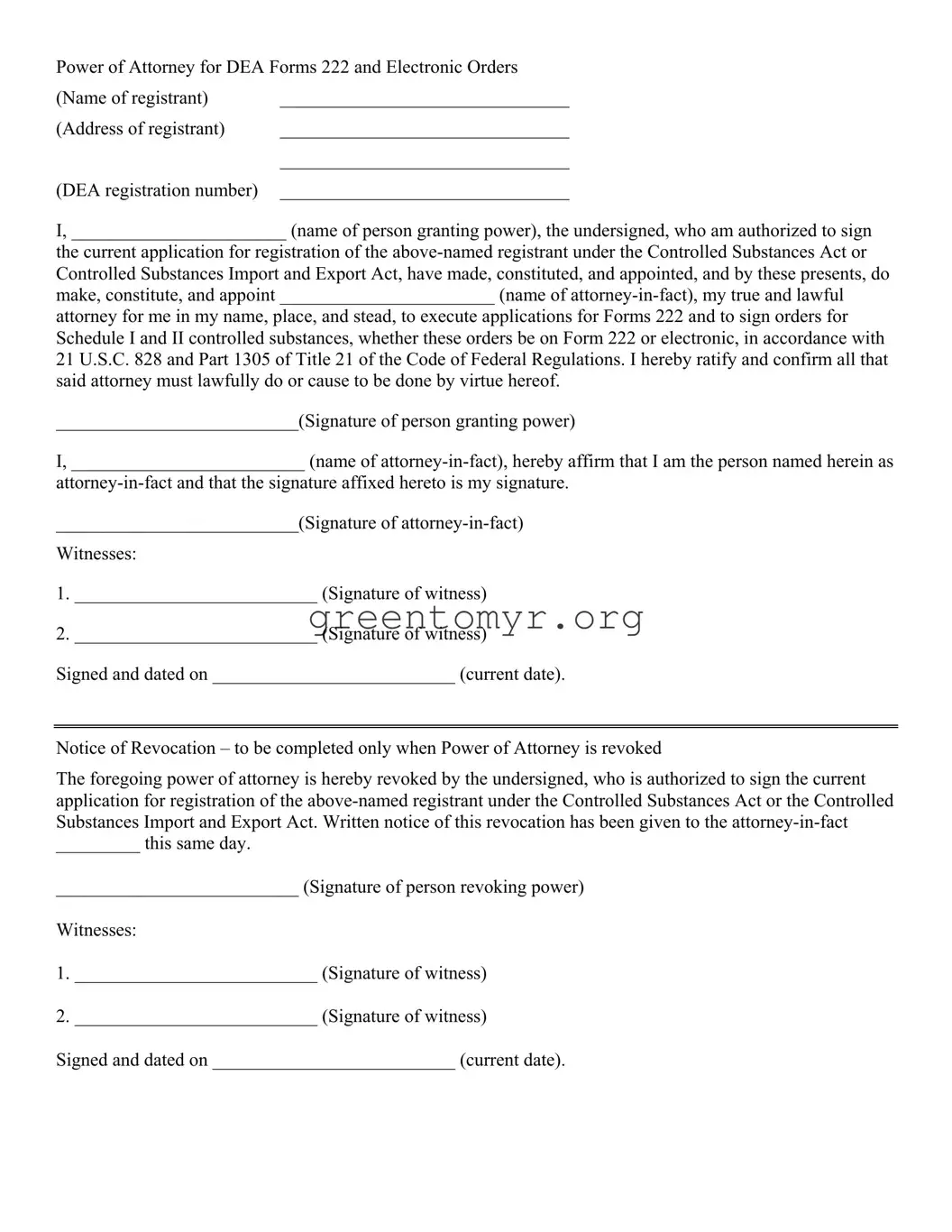Power of Attorney for DEA Forms 222 and Electronic Orders
(Name of registrant) |
_______________________________ |
(Address of registrant) |
_______________________________ |
|
_______________________________ |
(DEA registration number) |
_______________________________ |
I, _______________________ (name of person granting power), the undersigned, who am authorized to sign
the current application for registration of the above-named registrant under the Controlled Substances Act or Controlled Substances Import and Export Act, have made, constituted, and appointed, and by these presents, do make, constitute, and appoint _______________________ (name of attorney-in-fact), my true and lawful
attorney for me in my name, place, and stead, to execute applications for Forms 222 and to sign orders for Schedule I and II controlled substances, whether these orders be on Form 222 or electronic, in accordance with 21 U.S.C. 828 and Part 1305 of Title 21 of the Code of Federal Regulations. I hereby ratify and confirm all that said attorney must lawfully do or cause to be done by virtue hereof.
__________________________(Signature of person granting power)
I, _________________________ (name of attorney-in-fact), hereby affirm that I am the person named herein as
attorney-in-fact and that the signature affixed hereto is my signature.
__________________________(Signature of attorney-in-fact)
Witnesses:
1.__________________________ (Signature of witness)
2.__________________________ (Signature of witness)
Signed and dated on __________________________ (current date).
Notice of Revocation – to be completed only when Power of Attorney is revoked
The foregoing power of attorney is hereby revoked by the undersigned, who is authorized to sign the current application for registration of the above-named registrant under the Controlled Substances Act or the Controlled Substances Import and Export Act. Written notice of this revocation has been given to the attorney-in-fact
_________ this same day.
__________________________ (Signature of person revoking power)
Witnesses:
1.__________________________ (Signature of witness)
2.__________________________ (Signature of witness)
Signed and dated on __________________________ (current date).

